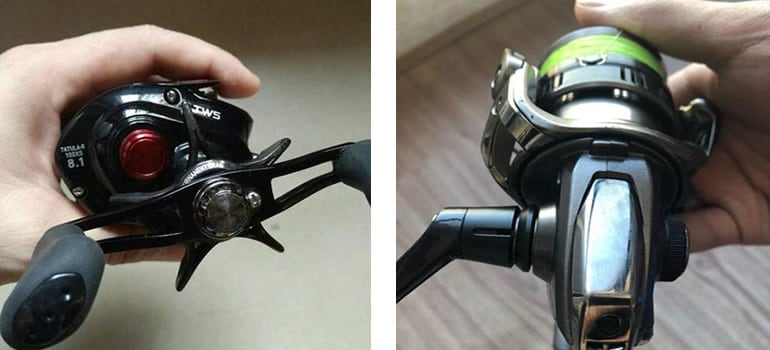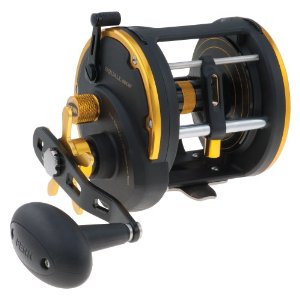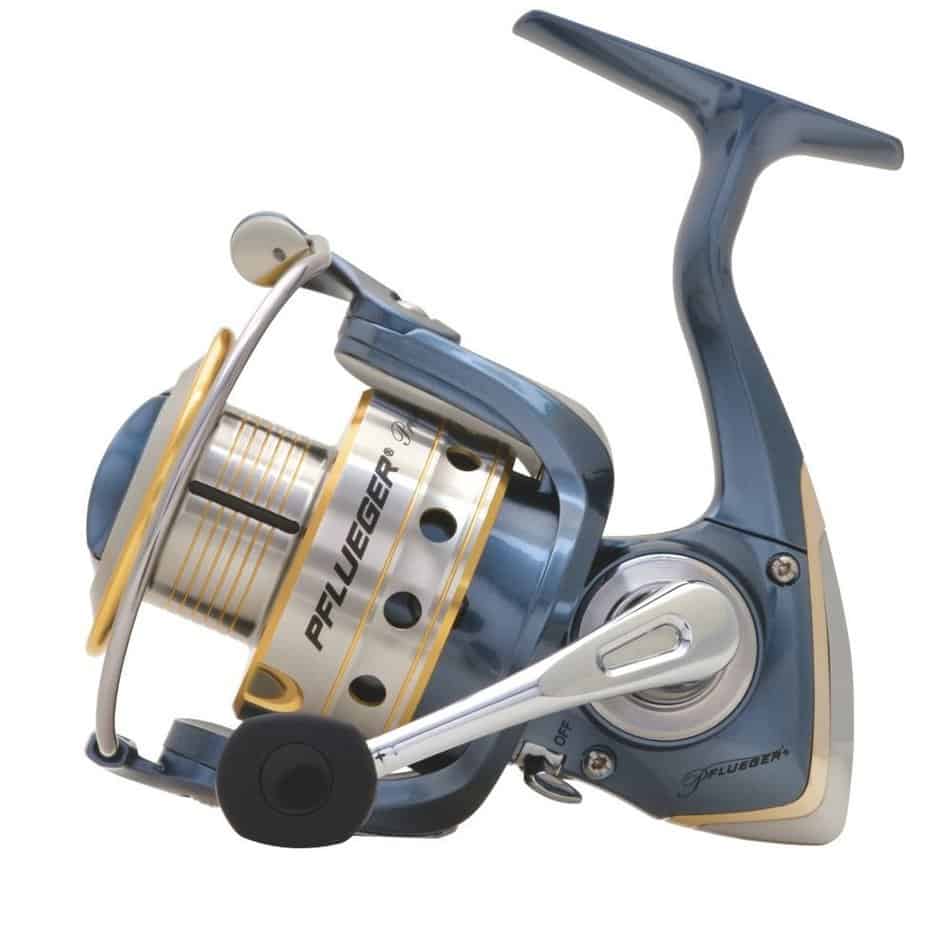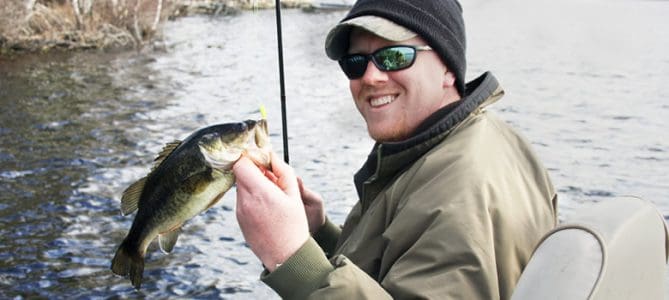If you buy via a link on this page, we may receive a commission, at no extra cost to you.Learn more

Let the debate begin! Whether you’re new to fishing or have been doing this for 50+ years, odds are you have considered the differences between baitcasters and spinning reels. Today, we will thoroughly cover the advantages and disadvantages of baitcasters and spinning reels to reveal which is best.
Most seasoned anglers prefer baitcasters over spin reels for their casting distance, precision, and durability. Typically, baitcasting reels also hold more lines than a spin reel and easily handle bigger fish than spinning reels.
Key Takeaway: baitcasting reels are favored for their casting power and precision, but they are more challenging to use than a spinning reel.
However, even though baitcasting reels are preferred among die-hards and professionals, you should still consider spinning reels as a viable option. Spinning reels are as common as baitcasting reels, primarily due to their easy-to-use application.
Differences Between Baitcasters and Spinning Reels:
Let’s begin by understanding the components and makeup of these two different reels. For a quick reference, jump to our table below!
Baitcaster Components
The first characteristic of a baitcaster is that it is mounted on top of the rod handle rather than the bottom. This is a key reason why baitcasters are more accurate: the line comes off the spool in direct line with the rod tip.
Second, because the spool of a baitcaster rotates, its spool operates on a brake system. When you press the button of a baitcaster, the spool is released to rotate, causing the line to unwind.
However, for the line to stop, the spool must also be stopped at the correct time. This means that the line on a baitcasting reel can be manipulated to fit a fisherman’s application, but this also means that casting a baitcaster is more complicated—more on casting later.
Third, you can locate the drag system of a baitcaster on the inside of the handle, which is shaped like a star. This allows anglers to adjust their drag on the go, even while reeling in a fish.
Last, baitcasting reels come in various sizes to fit each fisherman’s comfort. This is seen as an advantage for the experienced (sometimes pickier) fisherman.
Spinning Reel Components
Compared to a baitcaster, spinning reels are mounted on the bottom of a rod’s handle. This creates better balance while holding the rod, but some argue that you sacrifice accuracy. If you’re fishing with one of these spinning reels long enough, you’ll find a way to be accurate!
Rather than a release button, a spinning reel features a curved wire called the bail, which prevents any line from being released. Think of this as a gate: your line can come off the reel when the bail is open. When the bail shuts, your line stays put.
Third, rather than a spool that rotates to let out a line, the spool of a spinning reel is stationary. In this case, there is no brake system to adjust or learn. Instead, the weight of your lure pulls the line off the fixed spool as you cast. Then, when your lure hits the water, your line also stops.
Lastly, the drag adjustment of a spinning reel is a knob located on the front of your reel. This is more difficult to adjust while reeling in a fish, but it’s certainly possible.
| Reel | Key Characteristics |
| Baitcaster | The reel sits on top of the rod’s handle. Features a thumb bar that is pressed to release line. The Bulkier profile Uses a brake system to control the spool. The brake system is adjusted by a dial located on the side of the reel. The drag is adjusted by the star-shaped knob, located at the base of the reel handle. Features a small knob called the “spool tensioner.” |
| Spinning Reel | The reel sits below the rod’s handle. The line is released by opening the wire bail. The spool of a spinning reel is stationary rather than rotary. Does not use any brake system. The drag is adjusted with a knob that is located at the front of the reel. |
Pros and Cons of Baitcasters and Spinning Reels
| Reel | Pros | Cons |
| Baitcaster | Precision castingHigher manipulation of line and retrieval speedCan cast further Higher durability Stronger dragBigger spool for more line and a faster retrieve | Higher learning curve Easily backlash More expensive |
| Spinning Reel | Easy castingMore affordable Accurate casting Can cast far Easy to switch between right and left-hand preferences | Not as durable as a baitcasterBest for smaller fish (medium-sized bass and smaller)Difficulty casting heavy lures Difficulty handling heavier fish |
How Do I Setup My Baitcaster?
- String your line through the line guide on the front of the baitcaster.
- Using your preferred knot, tie your line around the spool of the baitcaster. This will be easiest if the spool tensioner is as tight as possible.
- With your thumb and index finger holding the line in front of the baitcaster, slowly reel the line into your reel, ensuring the line is tightly wound to the spool.
- Tie on your favorite lure.
- On the opposite side of the baitcaster’s handle will be a dial. Turn that up.
- Press the thumb bar, and release your thumb to watch your lure fall toward the ground.
- When the lure hits the ground, watch your spool. You’re ready to cast if the spool stops when the lure hits the ground!
- Adjust your dial and spool tensioner for controlled casts.
How Do I Setup My Spinning Reel?
- Open the bail.
- Secure your line to the spool using your preferred knot (an arbor knot may be easiest).
- Close the bail, and begin reeling the line with your thumb and index finger, holding the line in front of the reel.
- Reel in enough line until you have the desired amount of line (I prefer a spool that is about ¾)
- Adjust the drag as desired and tie on your favorite lure. You’re ready to fish!
How Do I Cast A Baitcaster?
- Be sure to adjust your baitcaster so the spool stops when the line hits the water (more on this setup later).
- With your thumb on the line of your spool, press down on the thumb bar.
- With a sidearm motion, slowly bring the rod behind you, and start a fast motion forward.
- Release your thumb from the line to let out the line, and your lure fly!
- While the lure is in the air, “feather” your line with your thumb.
- Before your line hits the targeted water, press your thumb on top of the spooled line to ensure your spool stops.
How Do I Cast A Spinning Reel?
- With your index finger, press your line against the rod handle.
- Open the bail with your free hand.
- Slowly bring the rod behind you, and start a fast motion forward.
- Release your index finger as the rod tip comes even with your position. If you release the line too early, your lure will fly straight into the air. If you release too late, the line will run straight into the water at your feet. No worries, we’ve all been there.
- After your lure hits the water, close your bail.
- Start reeling and catch that personal record!
How to Avoid Backlashes
The possibility of a tangle or backlash is much higher on a baitcaster than on a spinning reel. This is the one real drawback of baitcasters, but once you’ve had enough practice with this type of reel, chances are you’ll be able to avoid backlashes happening with any regularity.
Choose the Right Line
When you’re just starting out with a baitcaster, you’ll want to use a monofilament line rather than a braided line, or fluorocarbon. Fluorocarbon is stiffer and less forgiving than mono, which can cause some severe headaches when dealing with a resulting rat’s nest. A braided line can work but it can also have its issues with a baitcaster and when it does, the mess can be so bad you have to cut large amounts of line out to correct the situation.
Adjust the Spool Tension
On the side of your baitcasting reel, there will be a knob, and it should be on the same side as the handle. Start by adjusting the knob to its tightest pressure. To test it, hold your rod out with about 10″ of the line coming out the top of your rod with the lure dangling. Release the line with your thumb and observe how your lure reacts. If the tension is turned all the way up, the lure should go nowhere.
At this point, adjust the dial down to relieve some of the tension, to the position that your lure begins to fall at a rate of about two inches per second. This will be a proper starting tension for a beginner with a baitcaster. Remember to adjust the pressure when you change lures. If you are going from a half-ounce to a one-ounce lure, you’ll want to tighten the tension, just as you would want to lessen the pressure when going from a half-ounce to a quarter-ounce lure.
Eventually, as you gain more experience with a baitcasting reel, you can adjust this dial down further to lower the tension. Experts with a baitcaster will have this dial turned down completely, allowing the line to flow fast and free, and will apply pressure manually with their thumb.
When you can start to have more control over your cast is when baitcasting begins to get more fun. The ability to control the length and speed of your cast by applying and releasing pressure on the spool with your thumb is a joy once you get used to it.
Which Reel is Best for Bass Fishing?
There’s a reason that professionals use baitcasters so frequently. They provide more power, torque, and precision when casting into the thick weeds and cover that is so common when bass fishing. However, you can still fish for bass with a spinning reel. It will undoubtedly get the job done, but you might have more difficulty casting and retrieving heavier lures with a spinning reel.
Which Line is Best for My Baitcaster?
Your line’s weight will depend on the size of your baitcaster and the fish you’re targeting. However, a braided line will generally be your best friend with a baitcaster because a braided line has almost no memory.
Which Line is Best for My Spinning Reel?
Again, this will be determined by the size of your reel and target species. However, compared to a baitcaster, spinning reels are more suitable for monofilament, fluorocarbon, or braided lines.
Why Are Baitcasters More Accurate/Cast Further:
This answer has a lot to do with the position of the baitcaster. By sitting on top of the rod, everything is lined with the rod tip: where the rod is pointed is exactly where the line will go. Additionally, by pointing in a direct line from the reel to the rod tip, there will be less friction since the line will not rub against the guides as it is released.
Why Does My Baitcaster Backlash?
Your spool continues spinning after the line has stopped, which is the most common problem for anyone using a baitcaster. The problem is simple, but the fix can seem confusing, and the easiest fix is to turn up the brake’s dial on the side of the reel. You can turn down the brake’s dial as you get used to thumbing or feathering your line.
Which Reels Are More Expensive?
Typically, a baitcasting reel will be more expensive than a spinning reel. This is because of the intricate brake system that a baitcaster uses compared to a spinning reel. But just like any other fishing gear, there are price and quality variations for baitcasters and spinning reels.
Why Does My Spinning Reel Reel In Both Directions?
A switch on the bottom of your spinning reel allows the line to reverse. This is used for fighting bigger fish or getting out of snags, but it can be frustrating if you need to remember about it! Switch the button to ensure you can only reel in one direction.
Summary
Baitcasting reels and spinning reels are viable options for a variety of fishing adventures. However, if you’re looking for bigger fish, precision casting, and a more powerful retrieve, then a baitcasting reel is the way to go.




Hi Kyle,
Great job on the reel comparison. It does build down to what’s most comfortable to use.
Thanks Kyle! I am to fishing as an avid “hack” is to golfing. Love to fish but certainly no better than a hack! I have a baitcaster in my arsenal–and I am happy to say I can use it with the rare rat’s nest. Thanks to your article, though, I now have a better sense of when to use it over the spinning reel.